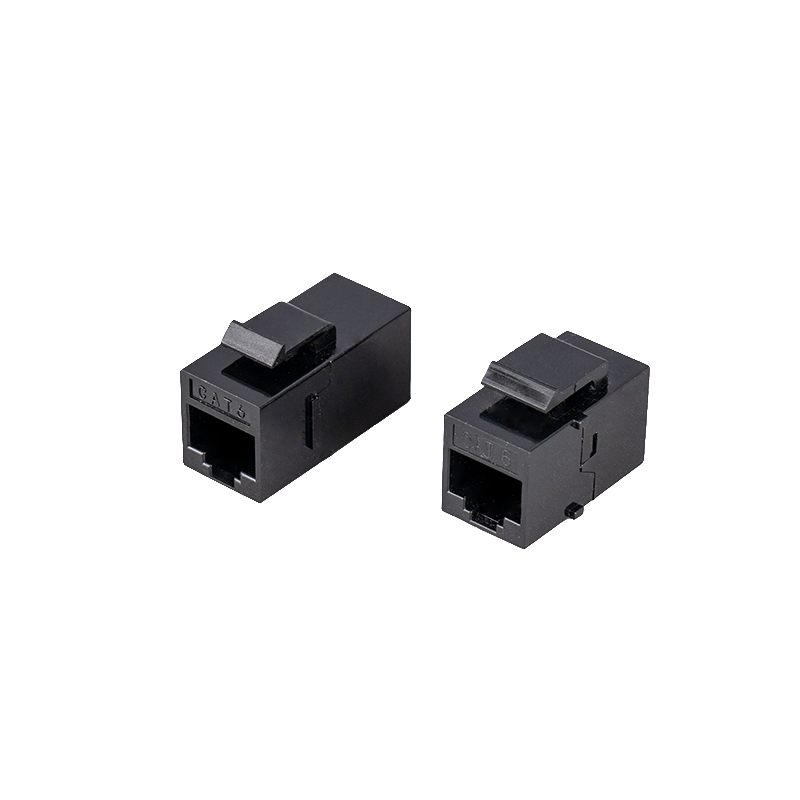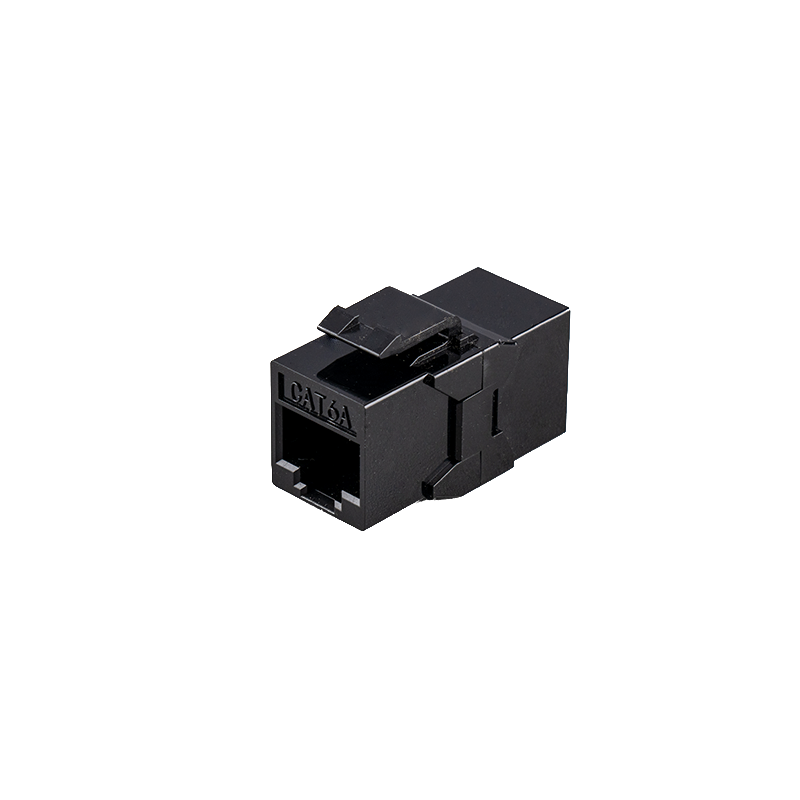How does Keystone Jack support the connection of Ethernet, coaxial and fiber optic cables?
1. Ethernet cable connection
Ethernet connection is one of the most common application scenarios of Keystone Jack. Ethernet cables, especially Cat5e, Cat6 and Cat6a cables, are widely used for data transmission in local area networks (LANs). Keystone Jack provides an efficient and stable connection method for Ethernet cables.
The connection terminals inside Keystone Jack usually adopt IDC technology, and the wires of the cable are inserted into the terminals by wire punching tools to ensure good electrical contact. In addition, the modular design of Keystone Jack also makes the wiring of Ethernet cables more flexible. In a home or office environment, installers can choose different types of Keystone Jacks as needed and install them in a unified Keystone panel, which is convenient for centralized management of multiple Ethernet connections.
2. Coaxial cable connection
In addition to Ethernet cables, Keystone Jack can also support coaxial cable connections, which are suitable for the transmission of TV and wired Internet. Compared with Ethernet cables, coaxial cables are generally used for the transmission of video and audio signals, especially in the fields of broadcast television and cable television.
The connection method provided by Keystone Jack for coaxial cables is usually through a dedicated coaxial Jack socket. These socket designs are similar to traditional coaxial connectors, but they are cleverly integrated into the modular structure of Keystone Jack, ensuring that they can be managed and connected just as easily in the panel.
3. Fiber optic cable connection
With the increasing demand for high-speed data transmission, fiber optic cables have gradually become an important part of network construction. Fiber optic cables can provide extremely high bandwidth and long-distance signal transmission, so they are widely used in data centers, large enterprise networks, and communication infrastructure.
Keystone Jack can also support the connection of fiber optic cables. Fiber optic Keystone Jack usually uses standard fiber optic connectors such as LC and SC, which are compatible with single-mode or multi-mode optical fibers. Installers achieve high-speed data transmission on the network by inserting the fiber optic connector into the fiber optic slot of Keystone Jack.
The modular design of Keystone Jack also plays an important role in the installation of fiber optic connections. Since the connectors of fiber optic cables are usually more precise and require higher precision and reliability, the standardized interface provided by Keystone Jack can ensure the stability of fiber optic connections. Users only need to insert the fiber optic connector into the socket of Keystone Jack to achieve seamless connection of fiber optic signals.
4. Flexibility brought by modular design
One of the biggest advantages of Keystone Jack is its modular design, which allows different types of cable sockets to coexist in the same panel. Whether it is Ethernet, coaxial or fiber optic cable, users can use different types of Keystone Jack in the same location according to actual needs. Installers do not need to set up separate wiring troughs or accessories for different cable types, and the entire network wiring system can be managed in a unified manner, greatly improving installation efficiency.
5. Simplify the installation process and post-maintenance
Keystone Jack not only simplifies the cable connection process, but also makes post-maintenance and upgrade work easier. When network requirements change, installers can directly replace the Keystone Jack on the panel without rewiring.


 英语
英语 中文简体
中文简体












